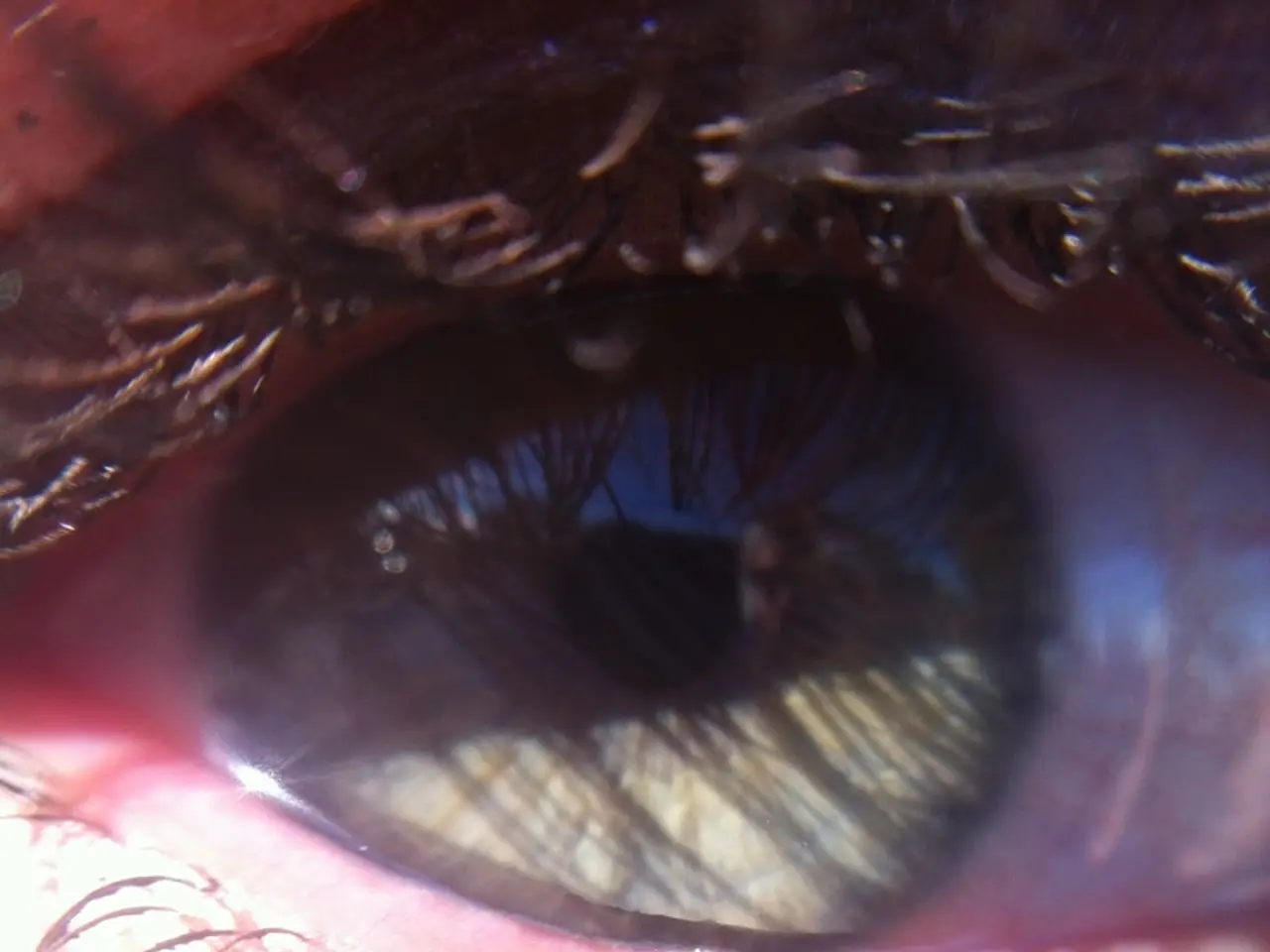Images, signs, remedies, and additional facts about eyebrow lice infestations
Eyebrow and eyelash lice, known medically as phthiriasis palpebrarum, are uncommon infestations of pubic lice. These tiny crab-like creatures can cause discomfort and distress, but understanding how to identify and treat them can help manage the problem effectively.
Identification
The first step in dealing with eyebrow and eyelash lice is recognising the signs. Symptoms often include itching, redness, irritation, and a sensation of something moving in the lashes. Visible white-colored eggs, or nits, at the roots of the hair can also be a telltale sign, making the roots look white. Although it might be possible to see the parasites with the naked eye, a magnifying glass may aid in detection. For a more accurate diagnosis, a healthcare professional can use a slit lamp biomicroscope under high-power magnification.
Treatment
Treatment for eyebrow and eyelash lice involves a combination of mechanical removal, eyelid hygiene, topical treatments, and avoiding scratching or rubbing the eyes.
Mechanical Removal
Carefully plucking visible lice and nits with fine forceps is an essential part of the removal process.
Eyelid Hygiene
Regular cleaning of the eyelid margins with warm water and gentle scrubbing using diluted baby shampoo or specialized eyelid cleansers is crucial to maintain eye health.
Topical Treatments
Applying ophthalmic-grade ointments such as petrolatum (vaseline) to the eyelashes several times a day for about 10 days can help suffocate the lice. In some cases, a physician may prescribe specific topical insecticides safe for ocular use, such as permethrin cream.
Prevention and Aftercare
It is essential to treat close contacts and clean bedding and clothing to prevent reinfestation. Since phthiriasis palpebrarum can be confused with conditions like blepharitis, professional diagnosis is recommended. Unlike common blepharitis, which is bacterial or inflammatory and treated mainly with eyelid hygiene and possibly antibiotics or steroids, lice infestation requires targeted lice removal and insecticidal treatment.
In conclusion, while eyebrow and eyelash lice may seem daunting, understanding their characteristics, proper diagnosis, and effective treatment methods can help alleviate the discomfort caused by these unwelcome visitors. If you suspect an infestation, consult a healthcare professional for accurate diagnosis and guidance on treatment options.
[1] Medical knowledge about diagnosis and treatment of eyelash lice. (n.d.). Retrieved from https://www.medicalnewstoday.com/articles/323820.php
This article is based on established medical knowledge about the diagnosis and treatment of eyelash lice.
- Identifying eyebrow and eyelash lice involves recognizing symptoms such as itching, redness, irritation, and a sensation of movement in the lashes, as well as visible white-colored eggs at the roots of the hair.
- Effective treatment for eyelash lice includes mechanical removal, eyelid hygiene, topical treatments, and avoiding scratching or rubbing the eyes.
- Using a magnifying glass or a slit lamp biomicroscope under high-power magnification can aid in detecting and identifying lice and nits in the eyelashes.
- Preventing reinfection of eyelash lice requires treating close contacts and cleaning bedding and clothing, as well as seeking professional diagnosis for accurate treatment options.
- While blepharitis may be treated with eyelid hygiene, antibiotics, or steroids, lice infestation requires targeted removal methods and insecticidal treatment for resolution.




